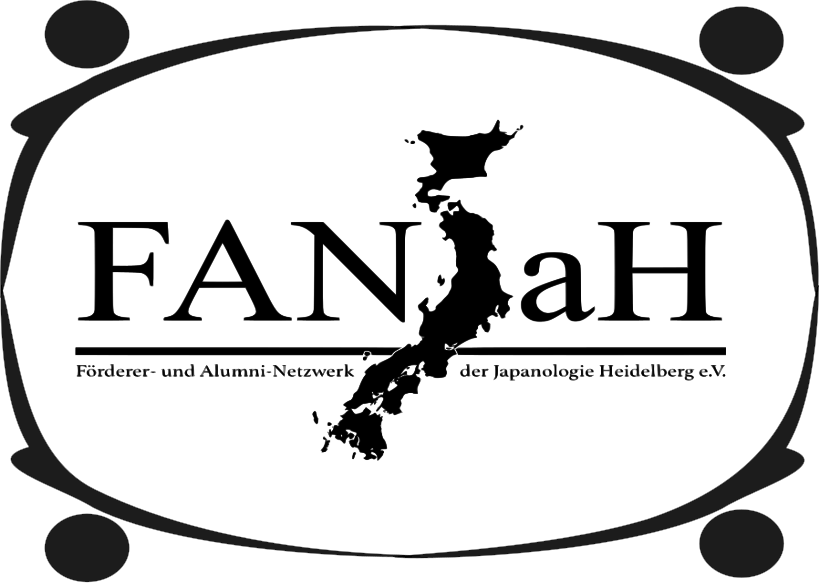Shaping national consciousness: utakai hajime, imperial poems and the Russo-Japanese war
Identifier (Artikel)
Abstract
The Imperial Poetry Bureau (Outadokoro 御歌所) was a court ministry founded in 1869 as one of the Meiji-era institutions which served to legitimize the new government as the restoration of the imperial rule. In my paper I will discuss the endeavors of Outadokoro’s leader, Takasaki Masakaze 高崎正風, and other members, to instrumentalize waka 和歌 poetry for purposes of nation-building. Whether as school songs, shōka 唱歌, imperial poems leaked to the press or poems submitted to the 1869 revived imperial poetry competition, utakai hajime 歌会始, waka poetry played a significant role in fostering national consciousness, particularly starting with the period of the Russo-Japanese War (1904–1905). The first part of this essay provides a historical overview of Outadokoro and utakai hajime, while the second part discusses the role played by waka poetry in the exacerbation of national fervor leading up to and during the Russo-Japanese War. I will show how, through literary topoi and tropes, the political myth of an unbroken imperial line descendant of Amaterasu was emphasized, while the high emotional content of imperial poems leaked to the press portrayed the Emperor as a concerned, affectionate father of the nation-family.
Statistiken

Literaturhinweise
Primary sources
CHIBA, Taneaki 千葉 胤明 (ed.) (1938): Meiji Tennō gyosei kinwa 明治天皇御製謹話. Tōkyō: Dainihon Yūbenkai Kōdansha.
KUNAICHŌ 宮内庁 (ed.) (1975): Meiji tennō ki 明治天皇紀 (Vol. 11). Tōkyō: Yoshikawa Kōbunkan 吉川弘文館.
NARITA, Tamezō 成田為三, Emperor Meiji 明治 (1928): Meiji Tennō gyosei shōkashū 明治天皇御製唱歌集. Tōkyō: Senshindō 先進堂.
DAJŌKAN BUNSHOKYOKU 太政官 文書局, NAIKAKU BUNSHOKYOKU 內閣文書局, NAIKAKU KANPŌKYOKU 內閣 官報局, ŌKURASHŌ INSATSUKYOKU 大蔵省印刷局, ZAIMUSHŌ INSATSUKYOKU 財務省印刷局 (eds.) (1904): Kanpō官報. 21.01.1904: 291. Tōkyō: Ryūkeishosha 龍溪書舎.
Secondary sources
ANTONI, Klaus (2016a): “Political Mythology and the Legitimation of Imperial Power in Modern Japan一the Case of the <> Myth”. In: Louise S. Milna, Marcin Lisiecki, Nataliya Yanchevskaya (eds.): Power and Speech.: Mythology of the Social and the Sacred. Pracownia Wydawnicza Eikon:19–28.
ANTONI, Klaus (2016b): Kokutai - Political Shintô from Early-modern to Contemporary Japan (Anthony de Pasquale, Trans.). Tübingen: Eberhard Karl University Tübingen.
ANTONI, Klaus, ANTONI, Yvonne (2017): „Inventing a State Ceremony: Ottmar von Mohl, Jinmu-tennô and the Proclamation of the Meiji Constitution on February 11th 1889.” In: Beiträge des Arbeitskreises Japanische Religionen, 11, Tübingen University. Available on Tübingen University’s website: https://publikationen.uni-tuebingen.de/xmlui/handle/10900/77117 (last accessed on 20.05.2022)
AOYAGI, Takashi 青柳 隆志 (2002): “Meiji shonen no utakai hajime. Waka okai hajime kara kindai utakai hajime he no suii 明治初年の歌会始–和歌御会始から近代歌会始への推移“. In: Waka bungaku kenkyū 和歌文学研究, 85, 1–11.
ÁROKAY, Judit (2004): „Waka-Literatur im Aufbruch: Kagawa Kagekis Kagaku teiyô“. In: Judit Árokay, Klaus Vollmer (eds.): Sünden des Worts. Festschrift für Roland Schneider zum 65. Geburtstag. Hamburg: Gesellschaft für Natur- und Völkerkunde Ostasiens: 63-77.
ÁROKAY, Judit (2010): Die Erneuerung der poetischen Sprache: poetologische und sprachtheoretische Diskurse der Edo-Zeit. Munich: Iudicium.
BENNETT, W. Lance (1980): “Myth, Ritual, and Political Control”. In: Journal of Communication, 30(4): 166–179.
BURNS, Susan L. (2003): Before the Nation: Kokugaku and the Imagining of Community in Early Modern Japan. Durham, NC: Duke University Press.
CRAIG, Albert M. (2014): “The Central Government”. In: Marius B. Jansen, Gilbert Rozman (eds.): Japan in Transition. Princeton NJ: Princeton University Press: 36-67.
DUTHIE, Torquil (2014): Man’yōshū and the Imperial Imagination in Early Japan. Leiden, Boston: Brill.
EPPSTEIN, Ury (2007): “School Songs, the War, and Nationalist Indoctrination in Japan.” In: Rotem Kowner (ed.): Rethinking the Russo-Japanese War, 1904-5. Volume 1: Centennial Perspectives. Leiden: Brill: 185–201.
FLOOD, Christopher (2002): Political Myth. New York: Routledge.
GLUCK, Carol (1997): “Meiji for Our Time”. In: Helen Hardacre, Adam L. Kern (eds.): New Directions in the Study of Meiji Japan. Leiden: Brill: 11–29.
HIRAYAMA, Shūkichi 平山周吉 (2014): Shōwa Tennō “Yomo no umi” no nazo 昭和天皇「よもの海」の謎. Tōkyō: Shinchōsha 新潮社.
HOMMA, Mitsunori 本間 光徳 (2014): “Gyosei uta <> wo meguru kōsatsu『御製歌「よもの海」』をめぐる考察”. In: ICU Hikaku Bunka. ICU比較文化, 46: 129–183.
INOUE, Michiyasu 井上通泰 (1927): “Meiji tennō oshū hensan ni tsuite 明治天皇御集編纂に就て“. In: Kyōka Shiryō 教化資料. Kyōka dantai rengō kai 教化団体聯合会 63: 1-30.
IRIYE, Akira (1989): “Japan’s Drive to Great-Power Status”. In: Marius B. Jansen (ed.): The Cambridge History of Japan. Vol. 5. Cambridge: Cambridge University Press: 721–782.
Irokawa, Daikichi. (1985): The Culture of the Meiji Period (Marius B. Jansen, trans.). Princeton, N.J.: Princeton University Press.
JANSEN, Marius B. (2020): “Japanese Imperialism: Late Meiji Perspectives”. In: Ramon H. Myers, Mark R. Peattie (eds.): The Japanese Colonial Empire, 1895-1945 Princeton, N.J.: Princeton University Press: 61-80.
KEENE, Donald (2002): Emperor of Japan: Meiji and His World, 1852 - 1912. New York: Columbia Univ. Press.
KERTZER, David I. (1988): Ritual, Politics, and Power. New Haven: Yale University Press.
KOIZUMI, Tōzō 小泉苳三 (1969): Kindai tankashi Meiji hen 近代短歌史明治篇. Tōkyō: Hakuyōsha 白揚社.
LARGE, Stephen S. (1992): Emperor Hirohito and Shōwa Japan: a Political Biography. London, New York: Routledge.
MATSUZAWA, Shunji 松澤 俊二 (2008): “Politics in Umoregi-no-hana: Its Literary Representation of the Imperial Tour『埋木廼花(うもれぎのはな)』の政治学--天皇巡幸の文学表象”. In: Nihon Bungaku 日本文学, 57(6): 31–41.
MATSUZAWA, Shunji 松澤 俊二 (2012): „Meiji ki Nihon no waka to ‚seiji‘: Takasaki Masakaze wo chūshin ni shite 明治期日本の和歌と〈政治〉: 高崎正風を中心にして“. In: St. Andrew’s University sociological review / Momoyama Gakuin Daigaku shakai gakuronshū 桃山学院大学社会学論集 45 (2): 39–59.
MATSUZAWA, Shunji 松澤, 俊二 (2014): “Yomu” koto no kindai: Waka, tanka no seijigaku. 「よむ」ことの近代 : 和歌・短歌の政治学. Tōkyō: Seikyūsha 青弓社.
MEHL, Margaret (1998): History and the State in Nineteenth-century Japan. London: Macmillan.
MIWA, Nobuo 美和信夫 (1987): “Meiji Tennō no dōtoku shisō ni kan suru hito kōsatsu. Nichiro sensōji no gyosei wo chūshin ni 明治天皇の道徳思想に関する一考察―日露戦争時の御製を中心に―”. In: Morarojii kenkyū モラロジー研究, 23: 113–138.
MIYAMOTO, Takashi 宮本 誉士 (2010): Outadokoro to kokugakusha 御歌所と国学者. Tōkyō: Kōbundō 弘文堂.
MURAI, Osamu 村井紀 (1999a): “Utakai hajime - tennōsei no sōshutsu 歌会始め–天皇制の創出 “. In: Hihyō kūkan 批評空間 Critical space, 20 (1): 244–253.
MURAI, Osamu 村井紀 (1999b): “Utakai Hajime to shinbun kadan. 歌会始めと新聞歌壇“. In: Sadakazu Fujii, 藤井貞和 (ed.): Tanka ni okeru hihyō to wa 短歌における批評とは, Tōkyō: Iwanami Shoten 岩波書店: 65–93.
MURASE, Haruya 村瀬春弥 (1994): “Gyosei ni yotte shirieru Shintō no rinri taikei” 御製によって知り得る神道の倫理体系. Shintō shūkyō 神道宗教, 157, 58–86.
NANAUMI, Erika 七海絵里香, and Ōzawa, Satoshi 大澤啓志 (2017): “Man’yōshū oyobi chokusen wakashū ni miru matsu no yomareta ricchi no hensen 万葉集および勅撰和歌集にみる松の詠まれた立地の変遷”. In: Nihon Ryokka Kōgaku Kaishi 日本緑化工学会誌, 43(1): 97–102.
NAKAJIMA, Hōjō 中島 宝城 (2005): “Kyūchū Utakai Hajime 宮中歌会始”. In: Waka wo utau - utakai hajime to waka hikō 和歌を歌う―歌会始と和歌披講. Tōkyō: Kasama Shoin 笠間書院: 13-44.
SATŌ, Kazunori 佐藤 一伯 (2004): “Nichiro sensōji no gyosei ni miru Meiji tennō no <> 日露戦争時の御製にみる明治天皇の「聖徳」”. In: Seiron 正論, 391(12): 66–79.
SHINADA, Yoshikazu (2001): “Manʾyōshū: The Invention of a National Poetry Anthology”. In: Haruo Shirane, Tomi Suzuki (eds.), Kevin Collins (trans.): Inventing the Classics: Modernity, National Identity, and Japanese Literature. Cambridge: Cambridge University Press: 31-50.
Stepanek, Marcia (1990): "Japan Radicals Eager to Oppose Emperor". In: San Francisco Examiner. 4 November 1990: A6.
SUZUKI, Ken’ichi 鈴木健一 (2017): Tennō to waka: kunimi to girei no 1500-nen 天皇と和歌: 国見と儀礼の一五〇〇年. Tōkyō: Kōdansha 講談社.
TAGAYA, Yukō (2017): “A Legacy of Japanese Courtly Literature: The Imperial New Year Poetry Recitation Party”. In: Deborah Nelson-Campbell and Rouben Cholakian (eds.): The Legacy of Courtly Literature: From Medieval to Contemporary Culture. Cham: Springer International Publishing: 207–221.
TANAKA, Aya 田中綾 (2007): “Meiji tennō gyosei wo meguru shōwa jūnendai - bunbushō ,Kokutai no hongira’ to Outadokoroin ,Meiji Tennō gyosei kinwa’ to no hikaku 明治天皇御製をめぐる昭和十年代--文部省『國體の本義』等と御歌所所員「明治天皇御製謹話」との対比”. In: Nihon kindai bungakukai Hokkaidō shibu hen 日本近代文学会北海道支部編, 5: 19–28.
TSUNEKAWA, Hei’ichi 恒川平一 (1939): Outadokoro no kenkyū 御歌所の研究. Nagoya: Kanreki Kinen Shuppankai 還暦記念出版会.
TUCK, Robert (2018): Idly Scribbling Rhymers. New York: Columbia University Press.
UCHIKOSHI, Takaaki 打越孝明 (1999): “Meiji tennō hogyō to gyosei (ka) 明治天皇崩御と御製(下). In: Meiji seitoku kinen gakkai hen 明治聖徳記念学会編, 4:69–128.
Uchino, Mitsuko 内野光子 (1988): Tanka to tennōsei 短歌と天皇制. Nagoya: Fūbaisha 風媒社.
WACHUTKA, Michael (2012): „Kokugaku“ in Meiji-period Japan. Leiden: Global Oriental.
YASUDA, Hiroshi 安田寛 (2006): „Shōka no sakka to Outadokoro jinmyaku 唱歌の作歌と御歌所人脈“. Nara Kyōiku Daigaku Kiyō. Jinbun-Shakaikagaku 奈良教育大学紀要. 人文-社会科学, 55(1): 129–133.
YAMAMOTO, Yoshitaka 山本嘉孝 (2017): “Waka eiyaku to shikei – Imperial Songs (1904) ni okeru hon’yakusha no seimu和歌英訳と詩形 ― Imperial Songs (1904) における翻訳者の責務“. In: Nihon No Gengo Bunka No Kokusaiteki Hatsugen No Happyō - Waka (Tanka) No Gaikokugo Hon’yaku Wo Tooshite. 日本の言語文化の国際的発信方法の開発 ― 和歌(短歌)の外国語翻訳を通して, 2016: 21–29.





